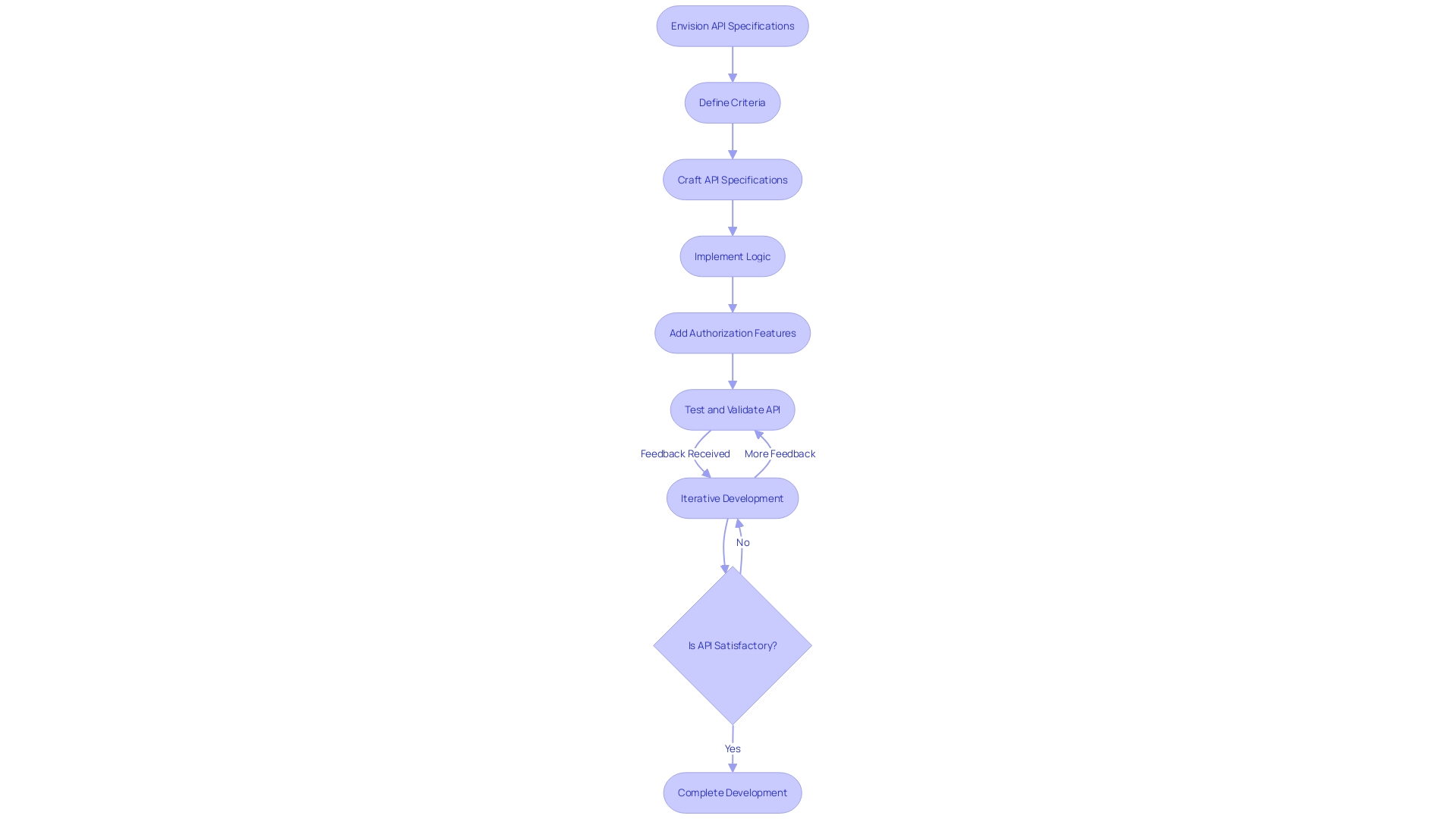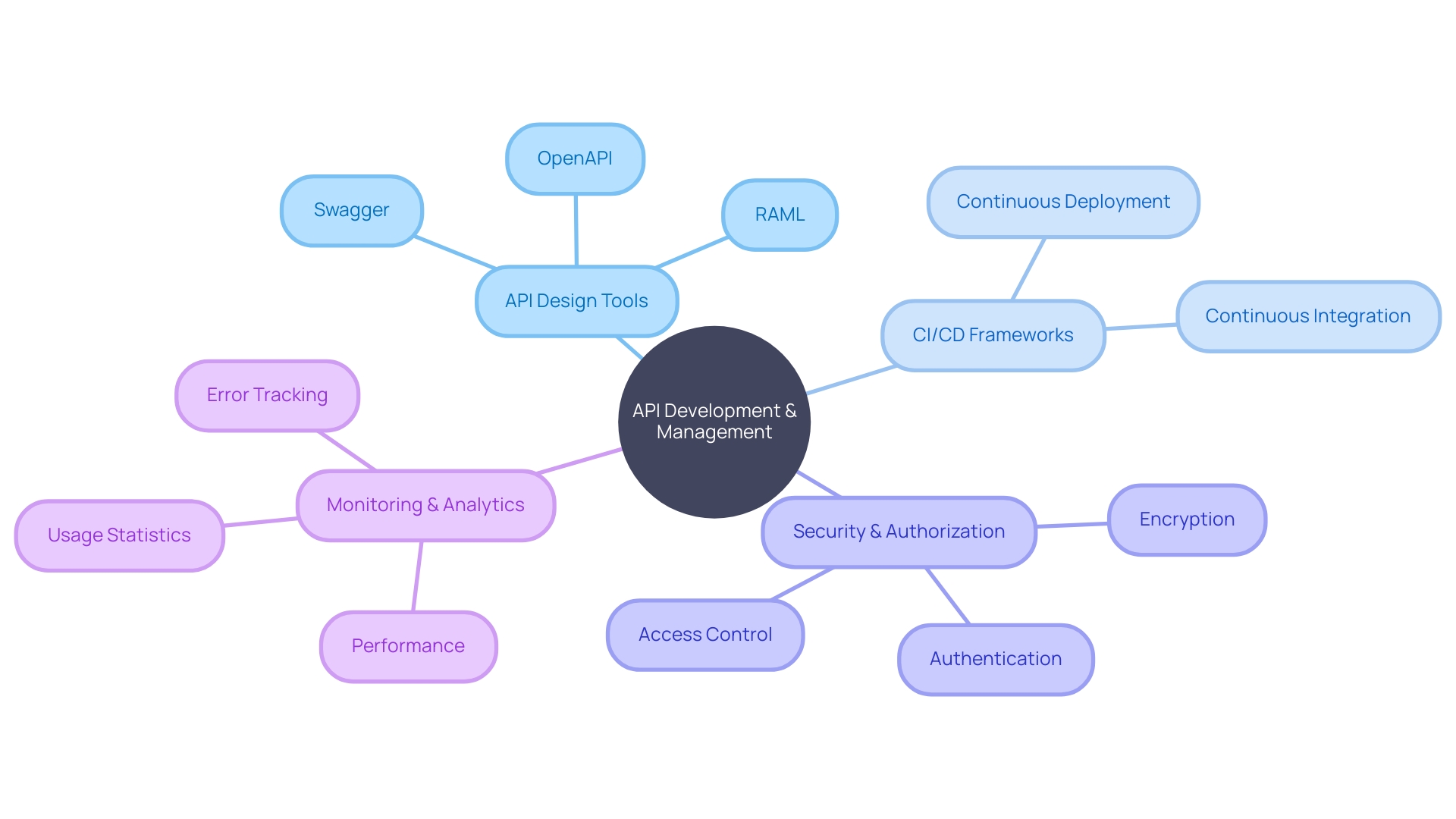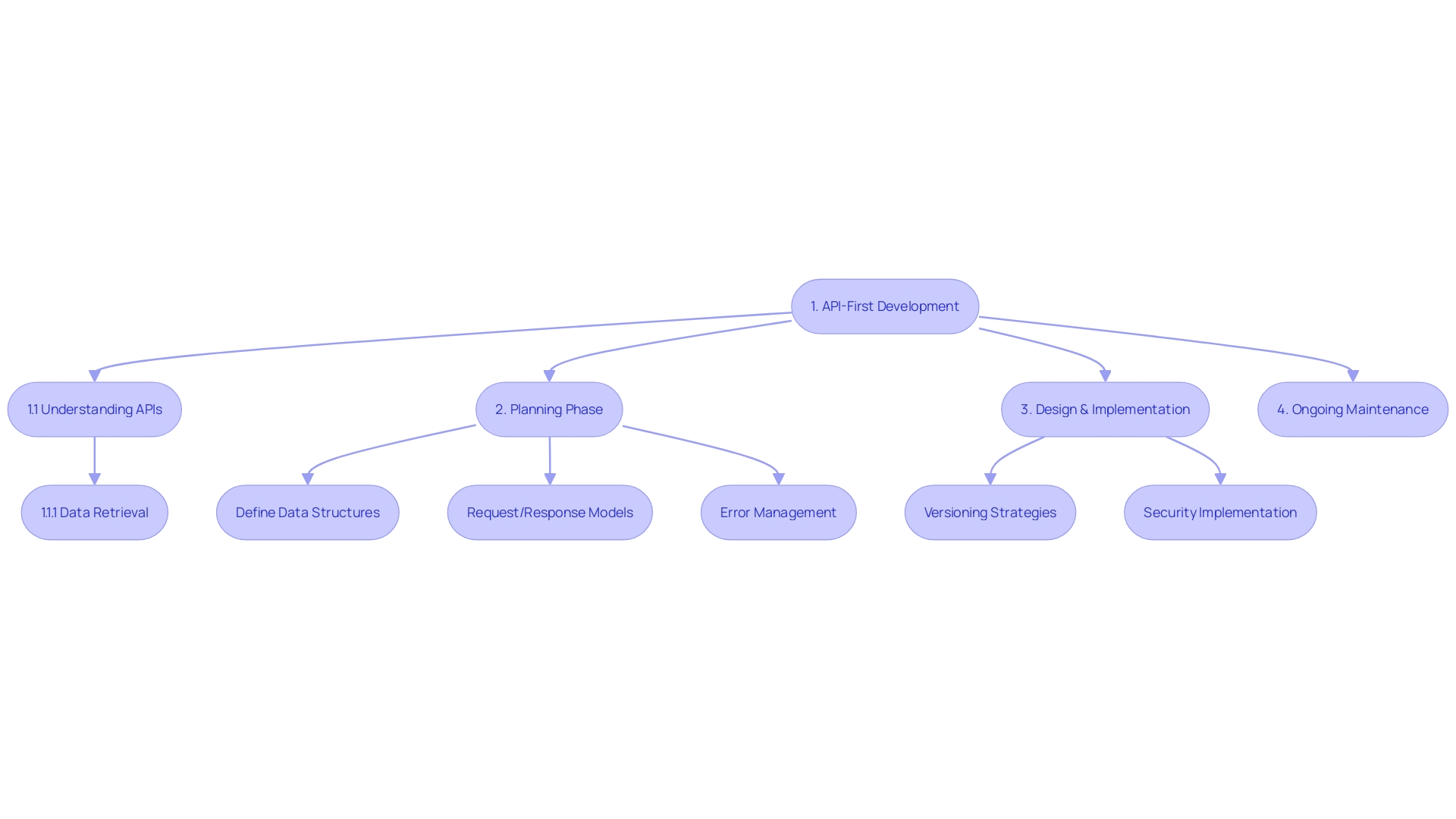Introduction
API-First development has gained prominence in recent years as a methodology that prioritizes the creation and design of Application Programming Interfaces (APIs) at the forefront of software construction. By focusing on the API from the initial stages, API-First development ensures broader adoption, eases development processes, and fosters compatibility with other applications and systems. In this article, we will explore the benefits of adopting an API-First approach, the steps involved in implementing it, and how it compares to other development methodologies.
We will also examine real-world examples of API-First in practice and discuss the tools and platforms available for API-First development. By the end, you will have a comprehensive understanding of API-First development and its significance as a cornerstone for maximizing efficiency and productivity. So let's dive in and explore the world of API-First development.
What is API-First?
API-First development, a methodology that has gained prominence over the last decade, places the creation and design of Application Programming Interfaces (APIs) at the forefront of software construction. By focusing on the API at the initial stages, it ensures broader adoption, eases development processes, and fosters compatibility with other applications and systems.
At the heart of any software application lies the API, a set of rules and specifications that enable software entities to interact seamlessly—much like diplomatic channels facilitating communication between independent kingdoms. These software 'diplomats' allow for essential operations such as data retrieval. Take, for example, a weather service API that furnishes real-time conditions, forecasts, and past weather data.
Adopting this strategy pays off significantly: A well-designed, consistent, and reusable API enhances user and client adoption, provides a developer-friendly environment, and ensures seamless integration across diverse platforms. It defines how software systems converse, with a key advantage being its versatility in allowing a quick and easy connection to services.
In essence, API-First development not only crafts the backbone of digital transformation but has also become a cornerstone for many thriving businesses in today's digital ecosystem.
Benefits of API-First Approach
Embracing an API-First approach means treating APIs as primary building blocks in software development, with full recognition of their role as key communication channels between disparate systems. This paradigm envisions each piece of software as a sovereign entity, with APIs facilitating vital exchanges of information - like the diplomatic envoys in a network of independent kingdoms. By delineating a consistent set of specifications and protocols, APIs enable different software applications to seamlessly interact.
They facilitate the retrieval and manipulation of data, whether it's fetching current weather information from a meteorological service or accessing a user's social media interactions. Through this approach, software teams gain the ability to operate autonomously and in parallel on front-end and back-end tasks, optimizing resource use and significantly reducing development time. Meanwhile, the modular nature of well-designed APIs paves the way for effortless third-party service integrations, thereby enhancing not only the system's accessibility but also its potential for future expansion.
In a digitally connected realm, where security breaches against APIs pose ever-increasing threats, a strong emphasis on API planning and solid architecture from the outset serves as a critical shield, guarding against the exposure of sensitive data. Furthermore, this methodology stands as a backbone for digital transformation across diverse industries, propelling businesses toward more adaptive and scalable solutions in an era where big data and software innovation dictate market success.
Steps to Adopt API-First Approach
When embarking on the journey of API-First development, envisioning and accurately defining the API's criteria is crucial. This ensures the creation of a robust foundation that other software components can build upon. Envision the API as the critical infrastructure that allows various applications to thrive harmoniously, sharing and retrieving data with ease.
A well-constructed API allows for efficient data retrieval, such as acquiring real-time weather data or historical patterns from a weather service's database.
To initiate, meticulously crafting the API specifications is imperative, detailing the endpoints as well as the formats for requests and responses. These specifications act as the binding agreement ensuring a seamless dialogue between the API and its clients. Tools like Swagger or OpenAPI offer a standardized toolkit for the API's blueprint, promoting clarity among stakeholders and painting a vivid picture of what the API seeks to accomplish.
Progressing to the actual implementation phase, developers must breathe life into the API through coding its logic and incorporating essential authorization features. They must not only adhere to best practices for development but also ensure standard operations such as version control, and error management are in place. This becomes the fabric of a well-oiled API that speaks the language of reusability, compatibility, and developer accessibility, key principles in the API-first paradigm.
Testing and validation are not to be overlooked. Leveraging automated frameworks and tools, developers must rigorously test the API against its defined targets, ironing out kinks and refining the API's behavior. Feedback is a gift, and iterative development hinges on this principle.
By iterating based on real-world usage and consumer insights, the API morphs into an entity that not only meets but exceeds user expectations and adapts with the dynamic tide of software requirements.

Design-First vs. Code-First vs. API-First
In the landscape of API development, understanding the core methodologies is fundamental to crafting a successful digital infrastructure. Observing the Design-First approach, we lay the groundwork for an API's functionality by establishing a comprehensive spec, a process likened to diplomatic relations between sovereign applications. This detailed plan focuses on ironclad API contracts, fostering synergy between various development teams and providing a solid foundation before a single line of code appears.
Switching to a Code-First modus operandi, developers charge ahead with code creation, later distilling their API documentation directly from their written software. This could lead to a swifter start; however, it may come at the expense of cohesion and consistency within the resulting API landscape and its documentation.
Lastly, the API-First philosophy guides us to consider the API as the cornerstone of the application structure. By focusing on the API as the initial step, we architect a sturdy, thorough core tailored to enhance collaboration, there in improving the reusability and scale of the final product. This approach underscores how APIs convey the essence of our value proposition—enabling connections between applications, much like diplomacy enables alliances between kingdoms, satisfying user needs, and securing a competitive stance in the market.
An API serves not merely as a set of technical specifications; it empowers developers to meet business goals and customer delight by streamlining application integration and paving the way for innovative digital experiences.
API-First in Practice
In harnessing the API-First approach, the integration of precise tools and adherence to established practices is indispensable. API Design Tools such as Swagger, OpenAPI, and RAML emerge as the cornerstones for shaping API specifications, offering a dynamic visual environment for formulating and documenting APIs. Inter-team collaboration is vital; frontend and backend teams must engage in prolific dialogue to synchronize API designs with overarching system architecture and goals, an ethos highlighted by software practitioner J. Vester's maxim to focus time on delivering value-extending features.
Embracing a Continuous Integration/Continuous Deployment (CI/CD) framework accelerates the incorporation of API modifications into the development process, thereby bolstering efficiency and stability. API version control is paramount for managing incompatible modifications, and maintaining up-to-date, detailed documentation is crucial for enriching API utilization and amalgamation.
Prioritizing Security and Authorization through authentication mechanisms safeguards sensitive data and sanctions appropriate access, ensuring a secure digital environment. Moreover, implementing Monitoring and Analytics facilitates the surveillance of API performance, discerning usage trends, and preempting technical dilemmas, as seen in the DHIS2 platform's analysis and data management across various health interventions globally.
Delineating APIs as diplomatic conduits between software 'kingdoms' accentuates their role in empowering software to interact coherently. The versatility of APIs, exemplified by enabling data access — like a weather service API furnishing live weather data — underlines its significance in today's digitally integrated landscape, as portrayed by a plethora of apps and services functioning on robust API frameworks.

Tools and Platforms for API-First Development
In the realm of modern software development, embracing an API-First approach signifies a fundamental shift in how applications are built. This strategy places the spotlight on Application Programming Interfaces (APIs) from the get-go, acknowledging their pivotal role in the overarching architecture. Consider APIs as the strategic envoys that enable disparate software realms to mesh seamlessly, exchanging data and services with diplomatic grace.
These interfaces stipulate precise protocols, allowing programs to retrieve information such as weather data and create a web of interoperable, agile applications.
Advocates of this paradigm like J. Vester resonate with the adage to focus our efforts on enhancing the core value of our products, relying on established services for all else. And statistics reinforce this philosophy - the API-first design is transforming the landscape with its promise of widespread adoption, developer satisfaction, and unrivaled compatibility. For instance, ensuring an API's design is accessible and intuitive invites a broader user base to engage with the technology.
Various platforms and frameworks have risen to the fore, simplifying the orchestration of API-First methodologies. Open-source initiatives such as Swagger and OpenAPI serve as the architects of API specifications, furnishing designers with illustrative interfaces for drafting and documenting API topologies. Versatile tools like Postman act as a Swiss Army knife for developers, simplifying request dispatch and subsequent testing phases.
API management solutions from companies like Amazon API Gateway and Apigee deliver a secure, scalable, and analytically informed environment to govern APIs.
Moreover, integration platforms like Zapier and MuleSoft sail forth as the glue that binds APIs with a myriad of systems, while development frameworks for languages such as Python's Django or Node.js' Express.js come equipped with native support for API-centric crafting—underlining a collective drive towards solidifying APIs as the cornerstone of software development.
Challenges and Considerations
Adopting an API-First approach can be likened to establishing intricate communication systems within a kingdom. APIs serve as the lifeblood of an application ecosystem, enabling seamless data retrieval and interaction among various software entities. While the benefits of such a system are substantial, including enhanced integration and more robust development processes, we must also navigate through some inherent complexities.
Crafting a comprehensive API is not without its hurdles; it requires in-depth planning around data structures, standardized request and response models, and meticulous error management strategies. The initial design phase demands a significant investment of time, but this foresight is critical in avoiding costly adjustments later in the lifecycle. Versioning strategies become crucial when updates are made, especially as simultaneous API versions may need to coexist to serve different user needs.
Security is another critical aspect, with a strong emphasis on implementing solid authentication practices to protect sensitive information treasured within the kingdoms of our software domains. Finally, this approach mandates an ongoing commitment to maintenance, ensuring that the API remains in top form, continually meeting the evolving demands of its users. These calculated efforts in API-First design and maintenance are geared towards sculpting a system that not only meets current demands but is also fortified to handle future expansions.

Conclusion
In conclusion, API-First development prioritizes the creation of APIs from the start, resulting in streamlined development processes, compatibility with other applications, and improved collaboration. This approach fosters autonomy, seamless integration, and scalability in software development.
To adopt an API-First approach, businesses define API criteria, create detailed specifications, implement robust authorization, and prioritize testing. Tools like Swagger, OpenAPI, and Postman assist in this process.
Compared to other methodologies, API-First development creates a solid foundation for collaboration, reusability, and scalability. APIs become the backbone of the application structure, empowering developers to meet business goals and streamline integration.
Tools like Swagger, OpenAPI, Postman, and Amazon API Gateway support API-First development and simplify API specification management. Integration platforms like Zapier and development frameworks like Django and Express.js further enhance the role of APIs in software development.
While challenges exist, such as comprehensive API design, versioning strategies, security implementation, and maintenance, careful planning and commitment overcome them.
In summary, API-First development maximizes efficiency and productivity by prioritizing APIs from the start. It enables businesses to create robust systems with seamless integration, adaptability, and a competitive edge in the market. By adopting an API-First approach, organizations thrive in the digitally interconnected landscape of software development.
Experience the benefits of API-First development with Kodezi CLI. Sign up today!
Frequently Asked Questions
What is API-First development?
API-First development is a methodology that prioritizes the creation and design of Application Programming Interfaces (APIs) at the beginning of the software construction process. It ensures that APIs, which allow software applications to communicate, are designed to be broad in adoption, ease development, and foster compatibility with other systems.
Why are APIs compared to diplomatic channels?
APIs are likened to diplomatic channels because they facilitate seamless communication and interaction between independent software applications, similar to how diplomatic envoys enable communication between independent kingdoms.
What are the benefits of an API-First approach?
The API-First approach offers several benefits, including enhanced user and client adoption due to well-designed APIs, a developer-friendly environment through consistent and reusable API structures, seamless integration across various platforms, reduced development time by allowing front-end and back-end teams to work autonomously and in parallel, and a strong foundation for digital transformation and scalable solutions.
How do you adopt an API-First approach?
To adopt an API-First approach, follow these steps: 1. Carefully craft API specifications, detailing endpoints, request formats, and response formats. 2. Use tools like Swagger or OpenAPI to standardize the API blueprint. 3. Implement the API by coding its logic and incorporating authorization features while adhering to best practices. 4. Test and validate the API using automated frameworks and tools. 5. Iterate on the API based on real-world usage and consumer insights.
What is the difference between Design-First, Code-First, and API-First approaches?
Design-First focuses on establishing a comprehensive API specification before coding. Code-First involves writing code first and then creating API documentation from the software. API-First treats the API as the cornerstone of development, emphasizing a robust, collaborative core for the final product.
What tools are used for API-First development?
Tools used for API-First development include API design tools like Swagger, OpenAPI, and RAML for formulating API specifications, CI/CD frameworks for efficient integration and deployment of API changes, API management solutions like Amazon API Gateway and Apigee for governance, integration platforms like Zapier and MuleSoft for connecting APIs with systems, and development frameworks with native API support, such as Django for Python or Express.js for Node.js.
What are the challenges of API-First development?
Challenges include the need for in-depth planning around data structures and standardization, investing significant time in the initial design phase to avoid costly future adjustments, implementing versioning strategies to manage API updates and maintain compatibility, ensuring strong security practices to protect sensitive data, and ongoing commitment to maintenance to keep the API updated with evolving user demands.
How does API-First development impact security?
API-First development places a strong emphasis on planning and building a solid API architecture from the outset, which serves as a critical defense against security breaches and the exposure of sensitive data. It involves implementing solid authentication mechanisms to safeguard information.
What is the role of APIs in digital transformation?
APIs are the backbone of digital transformation, allowing businesses to adapt to new technologies and scale their solutions. They enable seamless communication between software systems and are essential for the integration of big data and software innovations that drive market success.




